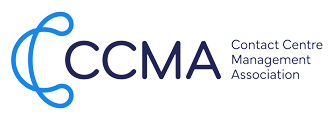
Whether for a newly-appointed head of operations or an experienced director evaluating which areas of an organisation deliver most value, establishing what represents excellence in the contact centre has always proven challenging.
Defining the right metrics for success has historically been a major hurdle.
And, until recent times, the issue of having valid industry benchmarks to compare your chosen measurements against has provided another significant obstacle, too.
A Foundation for Continuous Improvement
The CCMA Benchmark programme was introduced in 2018 and has grown, year-on-year. With the registration window now open for participation in the 2025 programme, the number of organisations already confirmed to be involved means this vital initiative is set to increase in size once again.
CCMA Benchmark provides an opportunity to assess contact centre performance against 25+ core metrics, with participating organisations set to submit 12-month 2025 data against a series of core questions during a one-month window, in January 2026.
The benchmarking process analyses the responses, draws correlations and calculates scores across those 25+ metrics. Each organisation then receives an individual report, which shows their scores alongside the overall average benchmarking results and includes commentary highlighting areas for improvement.
A key purpose of participating is to use these insights to interpret your performance, set goals and focus your contact centre’s efforts where they will deliver the greatest impact.
As Samantha Horton-Leigh, Customer Experience Manager at Cheshire West and Chester Council explained to us in a testimonial to highlight the reason behind her organisation’s annual involvement: “The Benchmark process has helped us identify strengths and areas for development across our customer service functions.
“The insights will inform our training programmes, support service redesign and help validate our strategic priorities. It has also given us a clearer picture of how our performance compares nationally.”
Vital Trend Analysis
Comparison is key. 2024’s CCMA Benchmark data, for instance, provided participating organisations with several compelling industry trends, when compared to the previous year’s corresponding study. And while CCMA Benchmark provides organisational anonymity in its presentation of industry averages, it does also help indicate ‘what good looks like’ amongst those involved:
Response times across channels are getting quicker – The average speed to answer (ASA) for voice calls dropped from 153 seconds to 139 seconds. Average speed to answer for webchats dropped from 211 secs to 156 secs, while average speed to answer for WhatsApp dropped from 3,998 secs to 3,312 secs.
Despite this, Average Handling Times (AHT) increased from 498 secs per interaction to 553 secs, and there continues to be a shift towards increasing the ratio of team managers to frontline colleagues. The average ratio in the 2024 study was 11.6 frontline colleagues to team managers, compared with 11 in the previous year.
Also of note is the average number of training hours contact centres provide to frontline colleagues – up from 17,888 to 24,736. Attrition rates are dropping – the rate at which employees leave a business over a given period of time is down from 33% to 28% in the 2024 study.
All this suggests an industry that’s continuing to push to be more efficient at responding to customer queries, while also reserving more time for complex interactions that take longer to resolve. It is also carving out an increasing number of hours for training and development of frontline colleagues – often with employee satisfaction and attrition rates in mind.
Looking Beyond the Numbers
CCMA Benchmark’s data shows that high-performing contact centres share distinctive characteristics that set them apart.
These organisations consistently demonstrate superior resolution rates, maintain higher customer satisfaction scores and achieve better employee engagement levels. They respond to customer queries more quickly while maintaining quality standards.
But while metrics provide important indicators, the practices and behaviours that drive sustained success often operate beneath the surface.
Leading contact centres cultivate cultures where their managers coach rather than merely supervise, and their frontline staff feel empowered to resolve customer issues without excessive escalation. Continuous improvement becomes second nature rather than a formal programme.
“The Benchmark process offers a valuable opportunity to reflect, learn and grow,” adds Cheshire West and Chester Council’s Horton-Leigh.
“It provides actionable insights, but also promotes a culture of continuous improvement and helps organisations stay connected to evolving customer expectations.”
About the Author
Chris Ward, Content and Communications Manager, CCMA

As content and communications manager, Chris works closely with the CCMA team and the contact centre community to ensure members receive the most relevant, timely and engaging content about their industry. Prior to working with the CCMA, Chris was a seasoned business journalist – this included nine years writing about trends in the CX and contact centre space for former industry publication, MyCustomer.





